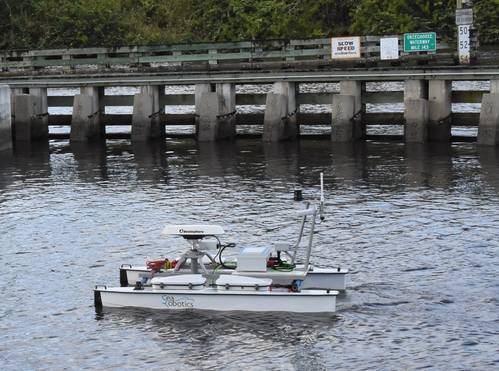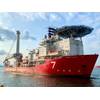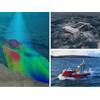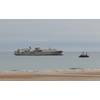SeaRobotics Corporation has delivered the USV 2.5, an autonomous 2.5 meter unmanned surface vehicle (USV) to the Center for Marine Science and Technology at North Carolina State University.
The USV, built by SeaRobotics, was funded by an award from the National Science Foundation’s Marine Lab Facilities Program. Given the diverse capabilities of the USV, it will be utilized as both an experiential-based teaching tool and to conduct basic and applied research in lake, river, estuary and costal environments.
The USV 2.5 is equipped with a suite of scientific instrumentation that will provide users with a variety of data. This instrumentation includes side-scanning and bathymetric sonars, a high-frequency sub-bottom seismic system, a RoweTech SeaPROFILER acoustic Doppler current profiler and sensors that record the temperature and conductivity of the waters being surveyed. In addition, the USV 2.5 measures the concentration of Chlorophyll-a and dissolved organic matter in surface waters.
The USV was delivered with a fully integrated Edgetech 6205 multi-beam echo-sounder, motion reference unit, dual antenna RTK GPS, sound velocity probe and HYPACK software.
“For a 2.5 meter USV, the system offers a broad range instrumentation, with the flexibility to swap sensing payloads based on the demands of the mission,” stated Don Darling, President of SeaRobotics Corporation.
“The USV will be used for seabed and water column mapping critical to an improved understanding of various marine and aquatic processes, including ecosystems dynamics, water quality, and shoreline stability,” stated Del Bohnenstiehl, principal investigator on the NSF project. Del Bohnenstiehl further stated, “The interdisciplinary toolkit provided by this platform is unique within the academic community and additional commercial off-the-shelf sensors, including water-samplers, spectrometers and passive acoustic arrays can be integrated as needed.”
• 
















 February 2024
February 2024



